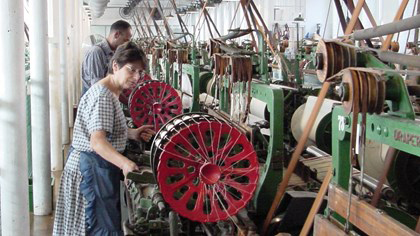December 21, 2023 — With New York state parks and historic sites celebrating 100 years in 2024, many eyes will be on our natural, historical, and cultural history. Looking beyond New York state, the National Park Foundation (NPF) highlights quite a few labor history stories and leaders.
“The history of a nation is a reflection of its people, a rich, interwoven tapestry full of triumphs and struggles alike,” said Rebecca Watson in a blog post titled Labor History in National Parks on the National Park Foundation website. “Labor history is an undercurrent of many of these stories, documenting the ways people have worked to put food on their tables, raise their families, and make a living.
“The labor movement, recorded and preserved in national parks across the country, stemmed from the need to protect workers’ interests, fight for better working conditions, safety, and health benefits, as well as racial and gender equality.”
Pullman National Historic Park
In 2015, Chicago got its first National Park Service unit with the designation of Pullman National Historical Park. The park tells the story of America’s first planned model industrial community and is significant for the American labor and civil rights movements.
Of note, A. Philip Randolph, a labor organize, and political strategist, founded the Brotherhood of Sleeping Car Porters (BCSP) in 1925 and gained membership in the American Federation of Labor, making the BSCP the first Black labor union in the United States.
“At the time, porters made up 44% of the Pullman workforce, making it the nation’s largest employer of African Americans,” according to the NPF. “The BSCP advocated for an improvement of working conditions and treatment of African American railroad porters and maids. In 1937, BSCP and the Pullman Company reached a landmark agreement, an important step for African American civil rights.”

Lowell National Historical Park
The site of two strikes, one in 1834 and another in 1836, the Lowell National Historical Park in Massachusetts is a prime example of how the industrial revolution informed the way we work today.
Young women and immigrants spent 12 to 14 hours in the mills, performed laborious tasks in often unhealthy conditions. Organized mostly by the women, workers at the mills struck to fight back against those conditions and reduced wages.
In 1844, the Lowell Female Labor Reform Association came together to advance women’s rights at the state level, joining other local labor groups to advocate for the 10-hour maximum workday.
César E. Chávez National Monument
The United Farm Workers of America (UFW), previously the National Farm Workers Association, is the first enduring and largest farm workers union. The union formed in the face of more than 100 years of harsh conditions, discrimination and violence.
César E. Chávez and other community organizers founded the UFW, bringing a burial program, credit union, health care, daycare, and job training to farms across California. In the 1970s, it expanded to become a national voice for farm workers.
Chávez’s “leadership brought sustained international attention to the plight of U.S. farm workers and secured higher wages and safer working conditions for them,” according to the NPF. “Chávez is widely recognized as one of the most important Latino leaders in the United States during the twentieth century.”

